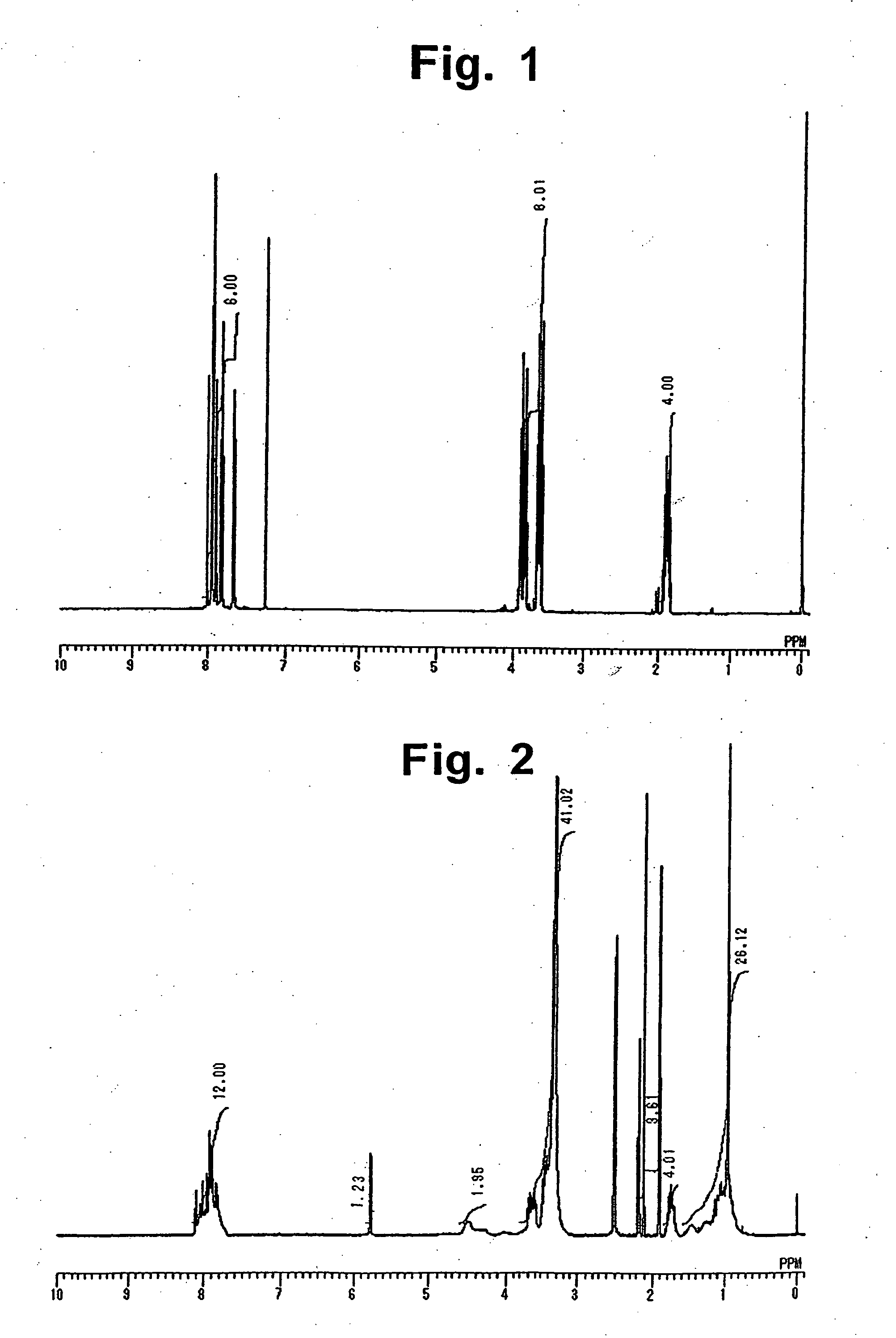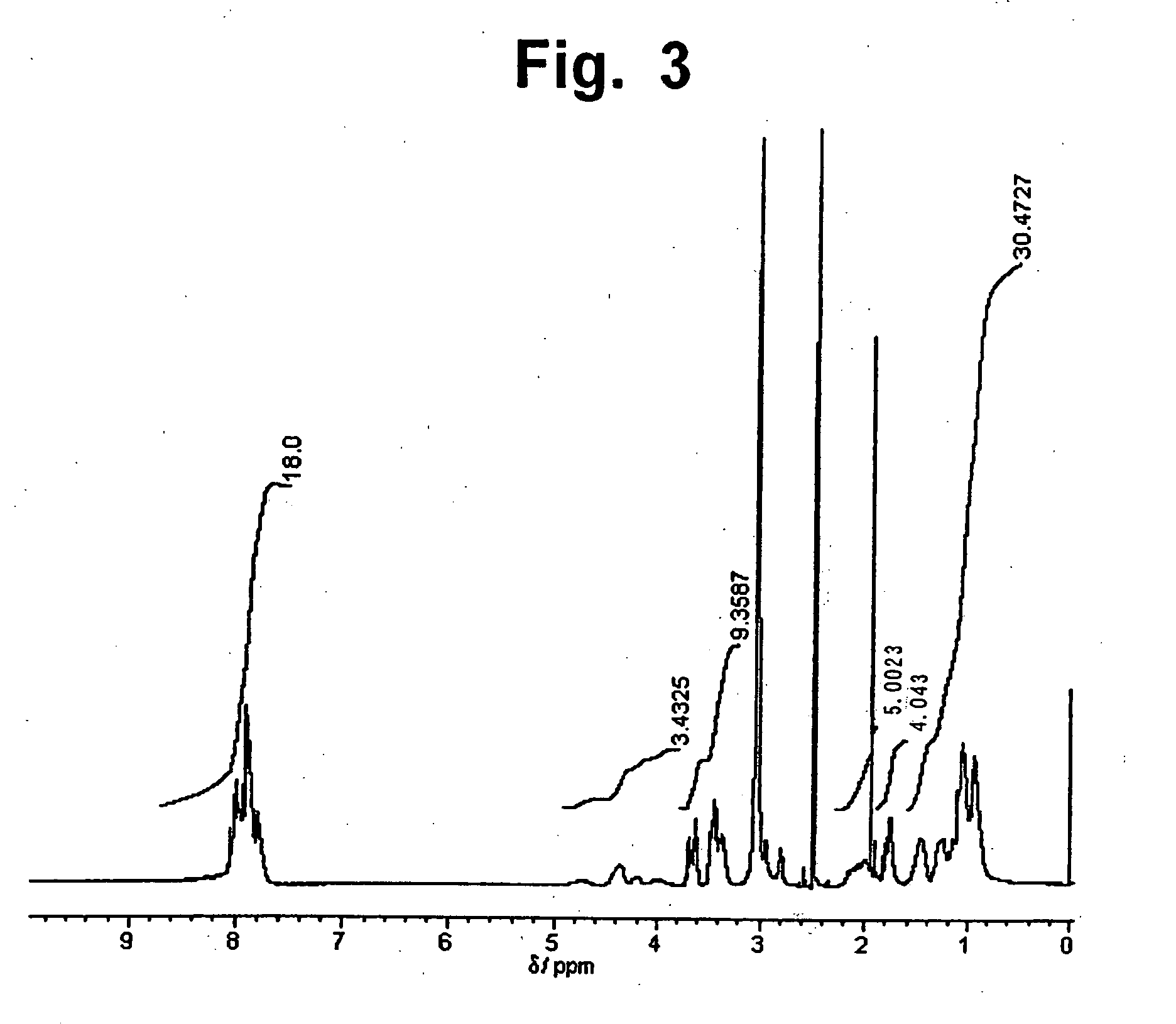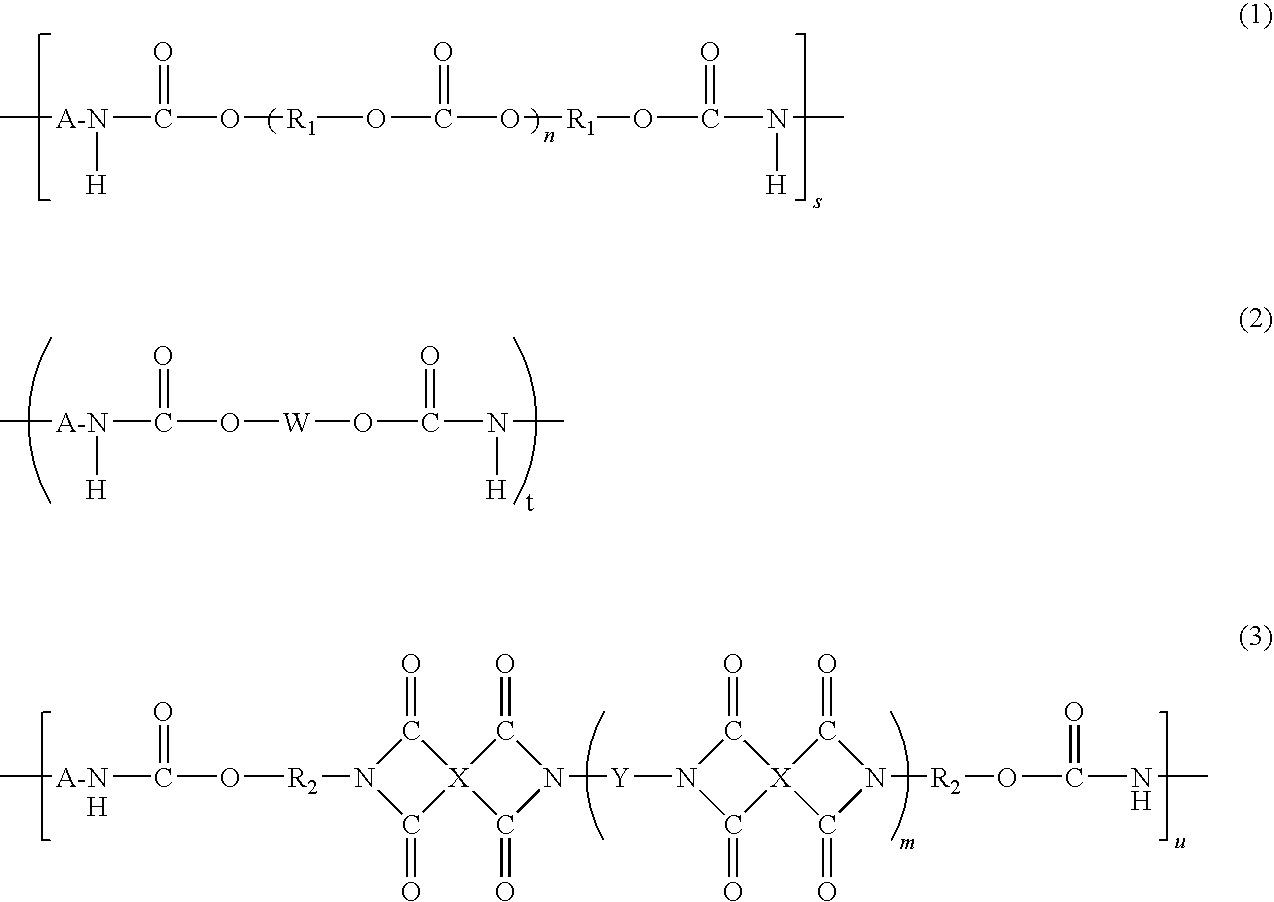Polyimide Resin and Curable Resin Composition
a technology of polyimide resin and composition, which is applied in the direction of printed circuit, printed circuit manufacturing, electrical equipment, etc., can solve the problems that the insulation film produced by the modified polyimide resin does not show satisfactory resistance, and achieves high heat resistance, high flexibility, and good soluble
- Summary
- Abstract
- Description
- Claims
- Application Information
AI Technical Summary
Benefits of technology
Problems solved by technology
Method used
Image
Examples
synthesis example 1
Preparation of Imide Compound A Having Hydroxyl Group at Each Terminal
[0112]In a 500 mL-volume glass separable flask equipped with a nitrogen gas inlet, a Dean-Stark receiver, and a cooler were placed 58.8 g (0.20 mol) of 2,3,3′,4′-biphenyltetracarboxylic dianhydride, 30 g (0.40 mol) of 3-aminopropanol, and 200 mL of dimethylacetamide. The compounds were stirred at 100° C. for one hour in a nitrogen gas atmosphere. To the mixture was added 50 mL of toluene, and the resulting mixture was heated at 180° C. for 4 hours, while water produced in the course of imidation reaction was removed together with toluene by azeotropic distillation. The reaction mixture was poured into 2 L of water, and the resulting precipitate was collected by filtration, washed with water, and dried under reduced pressure, to obtain 43.16 g of an imide compound in the form of powder. 1H-NMR spectrum of the imide compound is shown in FIG. 1. From the 1H-NMR spectrum, it is confirmed that the imide compound is an ...
synthesis example 2
Preparation of Imide Compound B Having Hydroxyl Group at Each Terminal
[0113]In a 500 mL-volume glass separable flask equipped with a nitrogen gas inlet, a Dean-Stark receiver, and a cooler were placed 58.8 g (0.20 mol) of 2,3,3′,4′-biphenyltetracarboxylic dianhydride, 17.0 g (0.10 mol) of isophorone diamine, 15.0 g (0.20 mol) of 3-aminopropanol, and 200 mL of dimethylacetamide. The compounds were stirred at 100° C. for one hour in a nitrogen gas atmosphere. To the mixture was added 50 mL of toluene, and the resulting mixture was heated at 180° C. for 4 hours, while water produced in the course of imidation reaction was removed together with toluene by azeotropic distillation. The reaction mixture was poured into 2 L of water, and the resulting precipitate was collected by filtration, washed with water, and dried under reduced pressure, to obtain 78.8 g of an imide compound in the form of powder. 1H-NMR spectrum of the imide compound is shown in FIG. 2. From a ratio of integral stren...
synthesis example 3
Preparation of Imide Compound C Having Hydroxyl Group at Each Terminal
[0114]In a 500 mL-volume glass separable flask equipped with a nitrogen gas inlet, a Dean-Stark receiver, and a cooler were placed 58.8 g (0.20 mol) of 2,3,3′,4′,-biphenyltetracarboxylic dianhydride, 25.55 g (0.15 mol) of isophorone diamine; 7.51 g (0.1 mol) of 3-aminopropanol, and 200 mL of dimethylacetamide. The compounds were stirred at 100° C. for one hour in a nitrogen gas atmosphere. To the mixture was added 50 mL of toluene, and the resulting mixture was heated at 180° C. for 4 hours, while water produced in the course of imidation reaction was removed together with toluene by azeotropic distillation. The reaction mixture was poured into 2 L of water, and the resulting precipitate was collected by filtration, washed with water, and dried under reduced pressure, to obtain 72.0 g of an imide compound in the form of powder. 1H-NMR spectrum of the imide compound is shown in FIG. 3. From a ratio of integral stre...
PUM
| Property | Measurement | Unit |
|---|---|---|
| temperature | aaaaa | aaaaa |
| temperature | aaaaa | aaaaa |
| temperature | aaaaa | aaaaa |
Abstract
Description
Claims
Application Information
 Login to View More
Login to View More - R&D
- Intellectual Property
- Life Sciences
- Materials
- Tech Scout
- Unparalleled Data Quality
- Higher Quality Content
- 60% Fewer Hallucinations
Browse by: Latest US Patents, China's latest patents, Technical Efficacy Thesaurus, Application Domain, Technology Topic, Popular Technical Reports.
© 2025 PatSnap. All rights reserved.Legal|Privacy policy|Modern Slavery Act Transparency Statement|Sitemap|About US| Contact US: help@patsnap.com



